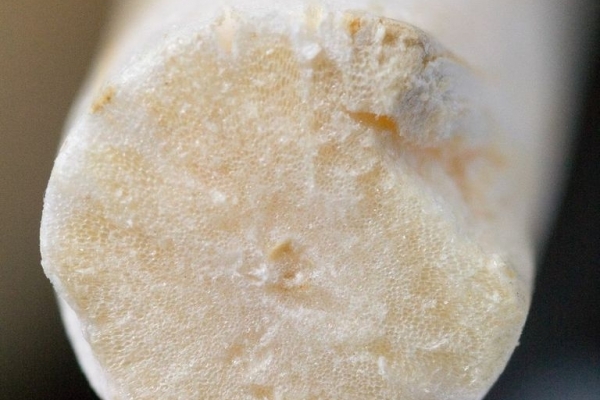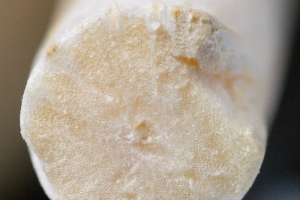
You may recognise this white-grey, velvety wood from the model-making shops of your childhood. Because it is so light and easily cut with a craft knife, it is perfect for making model aircraft or for whittling. Because this wood has a lower density than cork it is put to use in other applications where its low density is useful – for example as the core in many surfboards, or in the blades of wind-turbines. In both these applications it is normally laminated with something like a glass-reinforced plastic as, although it is strong for its weight, it is still a very soft and fragile material. All of the balsa wood cores in the Materials Library collection show signs of wear and tear, and this particular sample shows the damage that can be caused by simply putting pressure on the wood with your fingers. The tree that produces this wood is the spectacularly fast-growing and short-lived Ochroma Pyramidale, which can grow to heights of 30 metres in 10 to 15 years, and generally doesn’t live beyond 30 to 40 years. These trees are largely found in the tropical forests of South America, with Ecuador being the largest commercial producer of balsa wood. The lightness of the wood can be explained by the fact that it is comprised of large, thin-walled cells. When the tree is alive, these cells are filled with water to give the tree the strength it needs to stand in the jungle. Before it is treated, balsa contains about five times as much water as lignin, but this water is driven off during an extended kiln-drying process so that the wood can be used.
Sample ID: 75, 76, 77, 78
Add materials you find interesting to your own selections.
Use the  button to select a material and get started.
button to select a material and get started.







